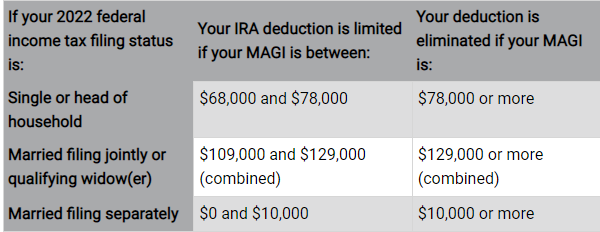Retirement Plan Limits on the Rise in 2022
- US Pensions
- 3 mins
Many IRA and retirement plan limits are indexed for inflation each year. Although the amount you can contribute to IRAs remains the same in 2022, other key numbers will increase, including how much you can contribute to a work-based retirement plan and the phaseout thresholds for IRA deductibility and Roth contributions.
How Much Can You Save in an IRA?
The maximum amount you can contribute to a traditional IRA or a Roth IRA in 2022 remains $6,000 (or 100% of your earned income, if less). The maximum catch-up contribution for those age 50 or older remains $1,000. You can contribute to both a traditional IRA and a Roth IRA in 2022, but your total contributions cannot exceed these annual limits.
Can You Deduct Your Traditional IRA Contributions?
If you (or if you're married, both you and your spouse) are not covered by a work-based retirement plan, your contributions to a traditional IRA are generally fully tax deductible.
If you're married, filing jointly, and you're not covered by an employer plan but your spouse is, your deduction is limited if your modified adjusted gross income (MAGI) is between $204,000 and $214,000 (up from $198,000 and $208,000 in 2021) and eliminated if your MAGI is $214,000 or more (up from $208,000 in 2021).
For those who are covered by an employer plan, deductibility depends on income and filing status. If your filing status is single or head of household, you can fully deduct your IRA contribution in 2022 if your MAGI is $68,000 or less (up from $66,000 in 2021). If you're married and filing a joint return, you can fully deduct your contribution if your MAGI is $109,000 or less (up from $105,000 in 2021). For taxpayers earning more than these thresholds, the following phaseout limits apply.

Can You Contribute to a Roth?
The income limits for determining whether you can contribute to a Roth IRA will also increase in 2022. If your filing status is single or head of household, you can contribute the full $6,000 ($7,000 if you are age 50 or older) to a Roth IRA if your MAGI is $129,000 or less (up from $125,000 in 2021). And if you're married and filing a joint return, you can make a full contribution if your MAGI is $204,000 or less (up from $198,000 in 2021). For taxpayers earning more than these thresholds, the following phaseout limits apply.

How Much Can You Save in a Work-Based Plan?
If you participate in an employer-sponsored retirement plan, you may be pleased to learn that you can save even more in 2022. The maximum amount you can contribute (your "elective deferrals") to a 401(k) plan will increase to $20,500 in 2022. This limit also applies to 403(b) and 457(b) plans, as well as the Federal Thrift Plan. If you're age 50 or older, you can also make catch-up contributions of up to $6,500 to these plans in 2022 (unchanged from 2021). [Special catch-up limits apply to certain participants in 403(b) and 457(b) plans.]
The amount you can contribute to a SIMPLE IRA or SIMPLE 401(k) will increase to $14,000 in 2022, and the catch-up limit for those age 50 or older remains $3,000.

Note: Contributions can't exceed 100% of your income.
If you participate in more than one retirement plan, your total elective deferrals can't exceed the annual limit ($20,500 in 2022 plus any applicable catch-up contributions). Deferrals to 401(k) plans, 403(b) plans, and SIMPLE plans are included in this aggregate limit, but deferrals to Section 457(b) plans are not. For example, if you participate in both a 403(b) plan and a 457(b) plan, you can save the full amount in each plan — a total of $41,000 in 2022 (plus any catch-up contributions).
The maximum amount that can be allocated to your account in a defined contribution plan [for example, a 401(k) plan or profit-sharing plan] in 2022 is $61,000 (up from $58,000 in 2021) plus age 50 or older catch-up contributions. This includes both your contributions and your employer's contributions. Special rules apply if your employer sponsors more than one retirement plan.
Finally, the maximum amount of compensation that can be taken into account in determining benefits for most plans in 2022 is $305,000 (up from $290,000 in 2021), and the dollar threshold for determining highly compensated employees (when 2022 is the look-back year) will increase to $135,000 (up from $130,000 in 2021).
Cross Border Wealth is a SEC-registered investment adviser which may only transact business in those jurisdictions in which it is registered or qualifies for an exemption or exclusion from registration requirements.
Cross Border Wealth may discuss and display charts, graphs, formulas, stock, and sector picks which are not intended to be used by themselves to determine which securities to buy or sell, or when to buy or sell them. This specific information is limited and should not be used on their own to make investment decisions.
All information provided in this article is for educational purposes only and does not intend to make an offer or solicitation for the sale or purchase of any specific securities, investment, or investment strategies. Please ensure to first consult with a qualified financial adviser and or tax professional. Further, please note that while said information has been obtained from known sources which are believed to be reliable, none of these are guaranteed.


